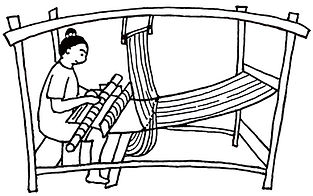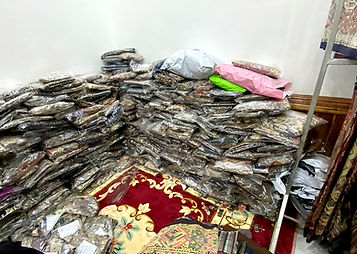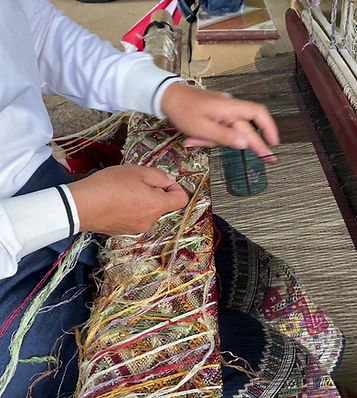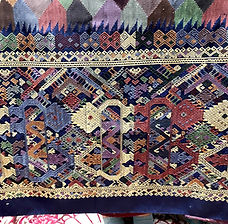Pick up
June 26, 2025
More Than Just Looks
The Story of Laos in the Sinh
◇ Part 1 ◇
in Viengxay



The unique pattern of Huaban is impressive.

A sold Shin waiting to be shipped nationwide. It is expensive, so it is common to buy it on a loan.

The complex patterns are woven with quick fingers. What you see now is the underside of the fabric.
Before I ever set foot in Laos, I had already fallen for the sinh—the traditional wraparound skirt made from intricately woven Lao textiles. Even today, it’s worn at official events and is part of school uniforms. I first saw it at an event and was instantly captivated. I knew then that I had to find one on my first visit. I later wrote about how practical and stylish this garment is in my book Loving Laos.
So when I had the chance to visit Viengxay village—one of Laos’s renowned weaving communities—it felt like fate. In this small village, looms are everywhere: beside fields, inside shops, in shaded front yards. I often couldn’t help but stop and chat with the weavers, who would greet me with warm smiles.
The looms are simple, but the patterns they produce are astonishingly intricate. Some are even woven from the reverse side—requiring the weaver to imagine the finished design while working from underneath. Many women weave between housework and childcare, and today about 60% of women in this village are involved in weaving.
Though once a family tradition, weaving became commercialized in the 1980s and gained international recognition in the mid-1990s. A local sales center now sells stunning sinh—handwoven from 100% natural silk, with full-body patterns and a luxurious texture. I was told many designs are unique to Houaphanh, each carrying cultural meaning.
To Lao women, the sinh is deeply personal. In this village, many still weave and wear their own. As one weaver said, “No matter how intricate the pattern, it only becomes a sinh when it’s worn.” That sentiment stayed with me.
(To be continued)

The surface of the woven fabric in the video above. The intricacy and elegant pattern is breathtaking.

The region is characterized by a variety of swirling diamond patterns that require advanced techniques.

Different types of diamond patterns

Bird motif

Chicken motif

The thread used in the fabric on the right is precious silk thread that has been carefully cultivated.

A white S-shaped Naga (dragon)
is a popular motif that is often used

Animal motif

To the right of the loom is the tool that determines the pattern design.

Shin of the Taiden tribe. It is characterized by a continuous rectangular pattern divided vertically and horizontally. Naga and human figures are woven into the black background.